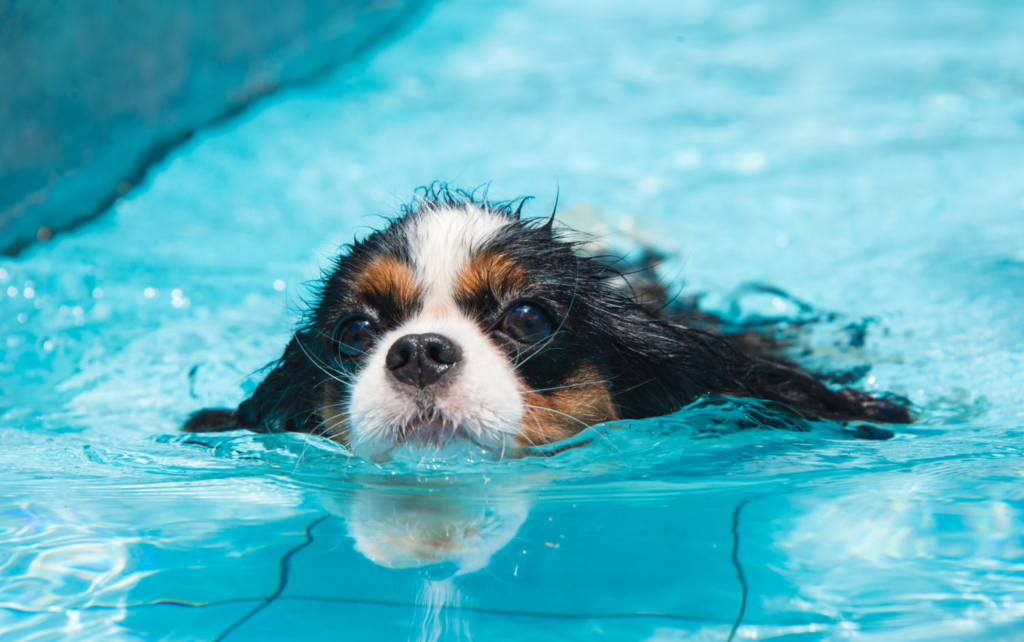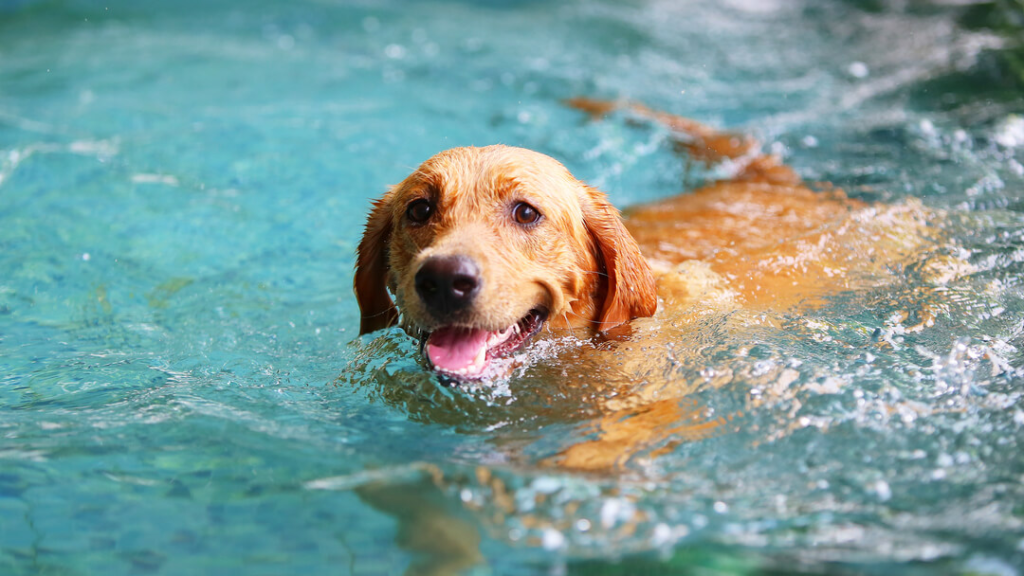Can All Dogs Swim?

Can All Dogs Swim?:- Not all dogs are born swimmers, nor do all of them naturally enjoy water. While it’s easy to assume that a dog’s instincts will kick in once they hit the water, this isn’t always the case. Some breeds are naturally more inclined to swim than others due to their historical roles, while some dogs may struggle to stay afloat because of their physical build or temperament.
Breeds and Their Relationship with Water
Several dog breeds, such as the Labrador Retriever, have a strong affinity for water. Historically, Labrador Retrievers were bred to retrieve waterfowl for hunters, which made swimming a vital skill for their work. As a result, many Labradors today still possess this innate love for the water. However, this doesn’t mean every individual Labrador will enjoy swimming. Just as with people, personal preferences come into play. Some Labradors may love nothing more than diving into the nearest lake, while others might be more hesitant and prefer to stay on dry land.

On the other hand, there are breeds that are simply not designed for swimming. The Doberman Pinscher, for instance, is a sleek and athletic breed, yet their deep chest and muscular build can hinder their swimming ability. Their body tends to tilt in the water, making it difficult for them to maintain the horizontal position needed to swim effectively. Similarly, Chinese Crested dogs, often hairless, struggle to tolerate cold water and are more likely to feel uncomfortable than enjoy a swim.
Another important example involves brachycephalic (short-nosed) breeds like French Bulldogs and Pugs. These dogs are not well-equipped for swimming due to their body structure, which makes it harder for them to stay buoyant. They may enjoy brief paddling sessions, but it’s best to keep these sessions short—no more than 10 minutes—and in shallow water. In addition to physical limitations, these breeds are also more prone to heat exhaustion, especially around swimming pools or beaches, where shade is limited.
Teaching Your Dog to Swim
If your dog doesn’t seem to be a natural swimmer, don’t fret! With a little patience and encouragement, many dogs can learn to enjoy the water. Here’s a step-by-step guide to help you introduce your dog to swimming:
1. Start Slowly: Begin by gently leading your dog into shallow water, where only their paws and lower legs get wet. Let them splash around and explore. Don’t rush this step—it’s important that your dog feels comfortable with the sensation of being in the water.
2. Gradual Immersion: Once your dog seems at ease, gradually lead them into deeper water. Always stay close by and support your dog as they start to paddle.

3. Encourage Full-Body Paddling: A common mistake dogs make is paddling with only their front legs, which can quickly tire them out. To help them achieve a more balanced swimming technique, support them under the belly, encouraging them to kick with their back legs as well.
4. Take It Slow: If your dog seems anxious or afraid at any point, stop and return to the shore. Reward them with treats and praise to build positive associations with the experience. Gradually work your way back into the water when they’re ready.
5. Patience Is Key: Teaching your dog to swim can take time, especially if they’re nervous or inexperienced. Be patient and focus on making the experience fun and rewarding.
Is It Safe for Dogs to Swim in Pools?
One of the most common concerns dog owners have is whether it’s safe for their pets to swim in backyard pools. The answer is yes—dogs can safely swim in pools, whether they are treated with chlorine, salt water, or mineral systems. Swimming is a fantastic way for dogs to cool down on a hot day, and it offers a great form of exercise. In fact, just one minute of swimming provides the same physical exertion as four minutes of jogging for a dog!
However, even though pool water is generally safe for dogs, there are still a few precautions to keep in mind. First, ensure the pool’s chemical levels are balanced. While the chemicals used to treat pools are safe in moderate amounts, they can sometimes irritate a dog’s eyes, nose, and skin. Be sure to rinse your dog off after swimming to remove any residual chemicals. Additionally, dogs can tire quickly while swimming, so always supervise them closely to prevent accidents.
Not Every Dog Is a Natural Swimmer
Just like people, dogs vary in their swimming abilities. Some dogs, like the Portuguese Water Dog and the Irish Water Spaniel, were bred specifically for working in aquatic environments. These breeds not only have physical attributes that make them strong swimmers, but they also tend to have a natural love for the water.
The Portuguese Water Dog, for example, has a water-resistant coat and was historically used by fishermen to retrieve items from the water. Similarly, the Irish Water Spaniel has a distinctive curly coat that repels water, making them well-suited for swimming.

How to Introduce Your Dog to the Pool?
If you want to introduce your dog to a swimming pool, it’s essential to do so gradually. Here’s how to ensure a positive experience:
1. Create Positive Associations: Let your dog explore the pool area when it’s dry, rewarding them for calm behavior. This helps them become familiar with the space without feeling overwhelmed.
2. Start in Shallow Water: Begin in the shallow end or with a kiddie pool to let your dog get used to the sensation of water before moving into deeper areas.
3. Gently Encourage: Use a calm, reassuring tone as you guide your dog into the water. Don’t force them—let them enter at their own pace.
4. Stay Close: Always stay by your dog’s side during their first few swims. Your presence will provide comfort and help build their confidence.
Water Safety Tips for Dogs
Whether your dog is swimming in a pool, lake, or ocean, safety should always be a priority. In pools, keep an eye on chemical levels, and be mindful of any irritation your dog might experience. For natural bodies of water, check with local authorities about water conditions. Harmful algae blooms, particularly in areas like the Great Lakes and Florida, can pose serious health risks to dogs. Avoid stagnant water or areas where algae is present, as ingesting contaminated water can be lethal.
With the right introduction and precautions, swimming can become an enjoyable activity for both you and your dog. Always prioritize your dog’s safety and comfort, and you’ll be well on your way to sharing many fun, water-filled adventures together.
Also Read:-




